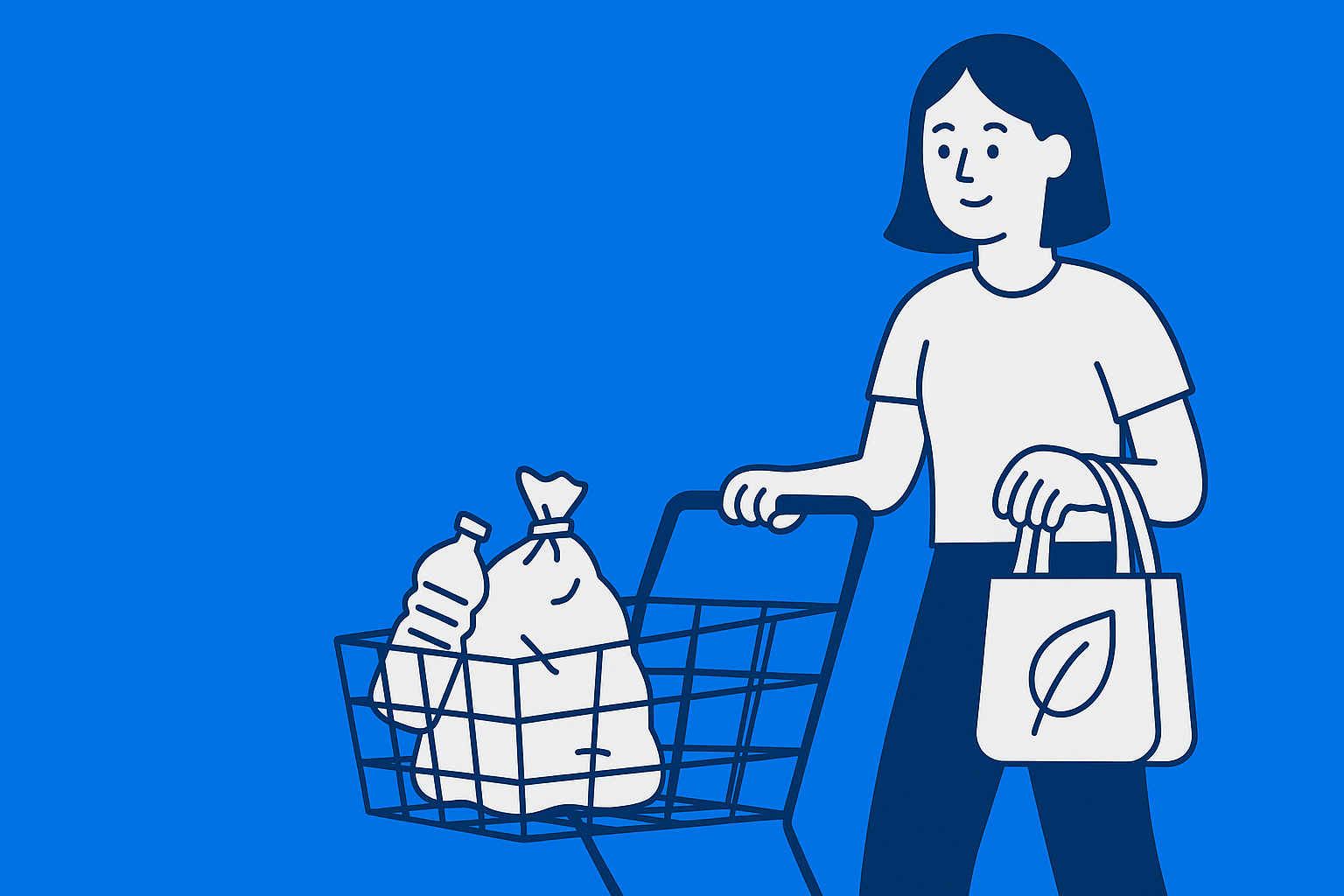Introduction – Talking Green, Shopping Dirty: The Contradiction at the Core
Consumers today are louder than ever about their values. They say they care about the planet. They sign petitions, repost sustainability content, and demand green alternatives from brands. But when it comes to actual buying behavior, the story shifts. The same consumers who praise eco-conscious living often reach for the cheaper plastic-wrapped product on the shelf.
This isn’t just hypocrisy—it’s a well-documented phenomenon known as the attitude-behavior gap. People talk green, but they shop dirty. And for brands investing in sustainable innovation and messaging, this gap isn’t just frustrating—it’s costly.
Too many companies build their entire eco-strategy around what people say in surveys or on social media. But consumer statements are riddled with bias: social desirability, aspirational thinking, and plain old wishful ideals. What matters more is what people do. And this article isn’t about blaming consumers—it’s about understanding the disconnection and learning how to exploit both attitudes and actions effectively.
We’ll break down the psychological barriers, identify what truly drives behavior, and show how to segment and activate both eco-believers and eco-doers. It’s time to stop being seduced by the green talk—and start decoding what really moves the market.
The Green Illusion: Why Attitudes Don’t Always Lead to Action
It’s tempting to believe that a consumer who claims to care about the environment will automatically favor sustainable products. But that assumption has been debunked again and again. This is the green illusion—the belief that eco-conscious attitudes naturally drive eco-conscious purchases.
In reality, attitudes are aspirational. People want to feel like good citizens. They express environmentally friendly views because it signals moral integrity, not necessarily because it translates into consistent action. This is especially true in survey responses and public forums, where social pressure skews honesty.
Psychologically, the gap is fueled by cognitive dissonance—the tension between one’s values and actions. Many consumers genuinely believe in sustainability, but when the eco-friendly option is more expensive, less convenient, or unfamiliar, their behavior betrays their beliefs. Instead of changing their habits, they rationalize their decisions or postpone responsibility (“I’ll shop sustainably next time”).
And marketers feed the illusion too. Brands love tapping into green narratives, often assuming that just talking about sustainability will create alignment with purchase behavior. It rarely does. The intent-action disconnect is real—and if you build strategy on intent alone, you’re building on sand.
The Real Drivers of Purchase Behavior
If attitudes don’t reliably drive sustainable buying, what does? The answer is brutally simple: price, convenience, familiarity, and habit. These are the non-negotiables of consumer behavior—unshaken even by the best-intentioned eco-messaging.
Most consumers are not actively anti-sustainability. They’re just not willing to sacrifice comfort, savings, or ease for it. If the eco-friendly product is more expensive, less accessible, or slightly less effective, it loses. And in highly competitive markets like food, beauty, or fashion, even a minor price difference can kill the green option.
Then there’s choice overload. A growing sea of “green” products has diluted meaning and overwhelmed consumers. Faced with labels like “organic,” “eco-certified,” “biodegradable,” or “carbon neutral,” many simply retreat to what they know—or to whatever’s cheaper and faster.
This doesn’t mean sustainability is doomed in the marketplace. It means marketers need to stop assuming that values beat value. Until green products are positioned to win on real-world drivers, they’ll remain a niche—celebrated in conversation, abandoned at checkout.
Segmenting the Eco-Audience: Believers vs. Doers
To market sustainability effectively, brands must stop treating “green consumers” as a single block. The key is to distinguish between those who believe in sustainability and those who act on it. These two groups—eco-believers and eco-doers—require different strategies, and lumping them together is where most campaigns fail.
Eco-believers are high on environmental awareness and concern. They engage with green content, talk about climate change, and express a preference for eco-friendly products. But their buying behavior may not match. These consumers are valuable for spreading messages, building brand perception, and driving cultural relevance. They’re your influencers, not necessarily your purchasers.
Eco-doers, on the other hand, make sustainability part of their real-life choices. They pay more for ethically sourced goods, opt for refillable or low-waste products, and research the companies they buy from. They’re fewer in number, but far more predictable and profitable. These are the consumers worth targeting with concrete calls to action, loyalty incentives, and product education.
Using market research tools—like behavioral segmentation, purchase tracking, and psychographic profiling—brands can map these segments with precision. Once you know who’s walking the talk, you can allocate your efforts smartly: influence the believers, convert the doers.
Leveraging the Gap: How to Convert Green Talk into Green Buys
Acknowledging the attitude-behavior gap is only the first step. The real challenge—and opportunity—is to turn sustainable sentiment into sustainable sales. And to do that, brands need to bridge the gap with strategy, not slogans.
First, lower the friction. If your eco-product is more expensive or less available, you’ve already lost most consumers. Sustainable must also mean simple: easy to find, easy to use, and competitively priced. That doesn’t mean racing to the bottom—it means showing value clearly, without moral lectures.
Second, frame sustainability in self-interest. Consumers are more likely to act when the benefit feels personal. Position eco-products as healthier, smarter, longer-lasting, or higher status. “Save the planet” might inspire clicks, but “save your skin, your money, or your time” drives purchases.
Third, activate social proof. Consumers follow behavior more than values. Showcase what others are buying, not just what they care about. Reviews, influencer content, and live sales data help shift norms from aspirational to actionable.
Finally, don’t abandon the believers. Even if they’re not buying yet, they’re amplifying your message. Use them to spread awareness while nudging them—through reminders, promotions, and transparency—toward action. They’re not lost causes. They’re unconverted potential.
The goal isn’t to shame consumers into change. It’s to make change feel like a no-brainer.
Conclusion – Stop Listening to What They Say: Watch What They Buy
It’s time for brands to face the truth: consumer declarations about sustainability are not reliable predictors of behavior. The attitude-behavior gap is not a glitch in the system—it is the system. Consumers talk green because it feels right, but they shop dirty because it’s easy, cheap, and familiar.
That doesn’t mean sustainability is doomed. It means success lies in acknowledging the contradictions and building marketing strategies that respond to real behavior, not just wishful thinking. Map the gap, segment your audience, and meet them where their wallets actually open.
Forget the illusion of the ideal eco-consumer. Focus instead on designing choices that make green the obvious, practical path. Make it easier, more rewarding, and more visible. Influence attitudes—but prioritize behavior.
Because in the end, the brands that win in sustainability won’t be the ones that make people feel better about what they believe. They’ll be the ones that change what people actually do.



